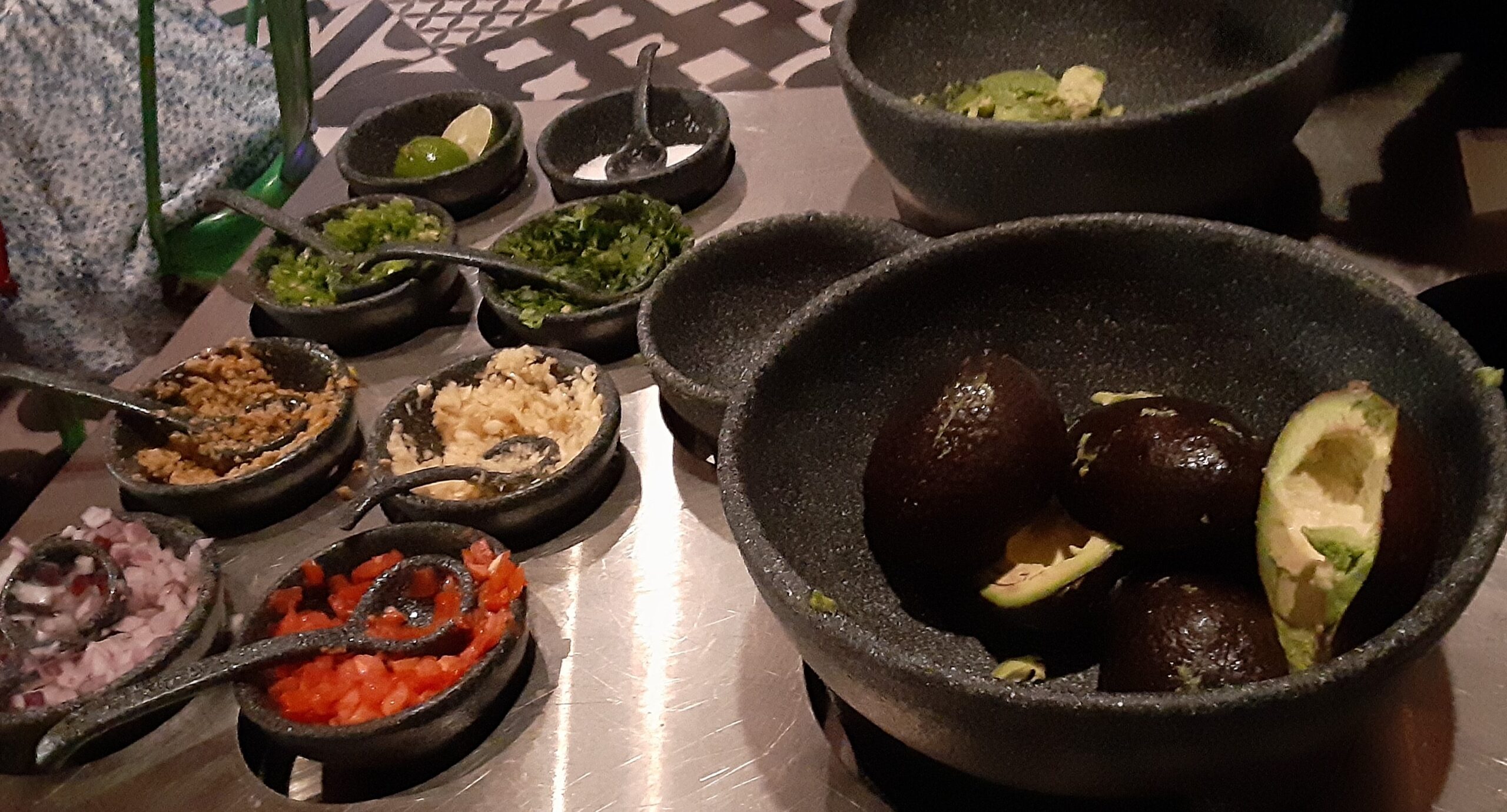Guacamole, the creamy and zesty avocado-based dip, has become a beloved culinary sensation worldwide. Originating from ancient Mesoamerican cultures, guacamole has transcended borders to become a staple in various cuisines. This article explores the rich history, cultural significance, and delightful preparation of this delectable dish.
Origins and history of guacamole
As guacamole’s popularity grew within the Aztec civilization, it became an integral part of their culinary tradition. Avocado trees, native to Mexico, were cultivated for their creamy texture and nutrient-rich fruits. The Aztecs held avocados in high regard, viewing them as a symbol of fertility and vitality. To create their early version of guacamole, they meticulously mashed ripe avocados using a mortar and pestle. This creamy base was then combined with an array of local ingredients, including juicy tomatoes, fiery chilies, and pungent onions, resulting in a flavorful concoction. The arrival of the Spanish conquistadors in the 16th century brought about a significant shift in the global culinary landscape. Along with various other indigenous foods, avocados made their way to Europe, where they were met with fascination and curiosity. The rich, buttery texture and unique flavor profile of avocados captured the palates of Europeans, marking the beginning of their integration into European cuisine.
Over time, guacamole underwent a series of transformations, influenced by the diverse culinary traditions of the regions it encountered. New ingredients, such as citrus fruits, cilantro, and additional spices, found their way into the mix, elevating the dish’s complexity and flavor profile. The evolution of guacamole mirrored the dynamic cultural exchange between the Old World and the New World, resulting in the beloved, versatile dip we know today.
Variations and regional Influences of guacamole
As guacamole continues to captivate taste buds worldwide, it has undergone fascinating regional adaptations, adding exciting new dimensions to this cherished favorite. Culinary enthusiasts in places like the Mediterranean and Middle East have introduced ingredients like garlic and cumin, infusing the traditional guacamole with a bold, aromatic flair. These aromatic additions bring layers of complexity to the dip, creating a profile that is both distinctive and memorable.
In tropical regions such as Southeast Asia and the Caribbean, a surprising yet delightful departure from the norm involves the incorporation of fruits like mangoes into the guacamole mixture. This sweet, juicy addition not only introduces a burst of natural sweetness but also harmonizes remarkably well with the creamy texture of the avocado, offering a delightful contrast that intrigues the taste buds.
Along the coastal fringes of Latin America and the Gulf Coast of the United States, where seafood often takes center stage, guacamole has taken on a unique coastal twist. Here, succulent morsels of shrimp or crab make their way into the mix, adding a delectable oceanic element to the dish. The marriage of creamy avocado with the briny essence of seafood creates a symphony of flavors that pays homage to the bounties of the sea.
These regional variations serve as a testament to the culinary creativity and adaptability that have made guacamole a truly global phenomenon. Whether enjoyed in its classic form or savored with these distinctive regional twists, guacamole continues to be a dish that brings joy to tables across continents, uniting us all in the shared appreciation for its vibrant and flavorful essence.
Cultural Significance
Guacamole’s journey from a humble dip to a culinary icon is a testament to its enduring appeal. In Mexico, it has transcended its humble origins to become an integral part of the nation’s rich culinary heritage and cultural identity. Its velvety texture and vibrant flavors complement a wide array of traditional Mexican dishes like tacos, enchiladas, and quesadillas, elevating them to new heights of deliciousness. The creamy, avocado-based concoction provides a perfect contrast to the spiciness and bold flavors often found in Mexican cuisine, creating a harmonious and satisfying culinary experience.
Beyond the borders of Mexico, guacamole has embarked on a global conquest, capturing the hearts and palates of food enthusiasts worldwide. In the United States, it has achieved a status of near-ubiquity, gracing tables at gatherings, parties, and casual get-togethers. Its creamy, flavorful goodness makes it the ultimate party dip, and it’s not uncommon to find it adorning everything from burgers and sandwiches to vibrant salads. The versatility of guacamole knows no bounds, and its ability to enhance a wide range of dishes has earned it a cherished spot in the pantheon of international culinary delights.
Guacamole – nutritional powerhouse
At the heart of guacamole’s nutritional profile lies the avocado, a fruit celebrated for its rich content of vitamins and minerals. From potassium, vital for maintaining proper heart function, to vitamin K, essential for blood clotting and bone health, avocados deliver a diverse array of nutrients crucial for our bodies.
One of the standout qualities of avocados is their high monounsaturated fat content. These heart-healthy fats have been linked to a reduction in bad cholesterol levels, making them a valuable component of a heart-healthy diet. By incorporating avocados, and by extension guacamole, individuals may actively contribute to safeguarding their cardiovascular health.
Dietary fiber is another noteworthy component of guacamole, originating predominantly from the avocado. Fiber plays a pivotal role in digestion, promoting regular bowel movements and preventing constipation. Additionally, it contributes to a feeling of fullness, potentially assisting in weight management by curbing excessive calorie intake.
The antioxidants found in guacamole are another key factor in its health benefits. Lutein and zeaxanthin, prominent in avocados, are particularly beneficial for eye health. They have been associated with a reduced risk of age-related macular degeneration, a common eye condition.
Beyond eye health, certain compounds present in guacamole’s ingredients, like garlic and onions, have demonstrated potential in reducing the risk of certain types of cancer. These natural compounds possess anti-cancer properties, further underscoring the potential health benefits of guacamole.
Guacamole also boasts immune-boosting properties. Garlic, a common ingredient, is rich in vitamin C and antioxidants, known to fortify the immune system. The inclusion of lime juice, another citrus component, further contributes to this immune-enhancing effect.
For those concerned with bone health, guacamole’s vitamin K content is of particular interest. This nutrient is pivotal for calcium absorption and bone mineralization, supporting the overall health and strength of bones.
Avocado’s influence on blood sugar levels is also noteworthy. The monounsaturated fats it contains can help stabilize blood sugar levels, a crucial consideration for individuals managing diabetes.
Skin health benefits from the consumption of guacamole, too. The combination of healthy fats and vitamin E in avocados contributes to a radiant complexion, while also reducing inflammation, promoting skin health from within.
The brain and mood also reap rewards from guacamole’s nutritional profile. The healthy fats present are integral to optimal brain function and may contribute to improved mood and cognitive performance.
In terms of inflammation, certain ingredients in guacamole, such as garlic and avocado, possess anti-inflammatory properties. This may provide relief for individuals suffering from inflammatory conditions.
It is important to remember that while guacamole itself is highly nutritious, how it is consumed matters. Pairing it with whole-grain chips, raw vegetables, or using it as a spread on whole-grain bread amplifies its health benefits. Moderation, too, is essential, as guacamole, despite its nutritional value, remains calorie-dense due to its healthy fat content. By incorporating guacamole into a balanced diet, individuals can enjoy its delightful taste while reaping the numerous health benefits it offers. Health Benefits

Preparation of guacamole
Here’s how I like to make guacamole, and I’ll share it as if we’re preparing it together in the kitchen:
First things first, the star of the show is undoubtedly the avocado. To make a perfect guacamole, you want avocados that are just ripe, giving slightly when you gently press them. This is when they’re at their creamiest and provide that ideal base for our dip. Now, onto the supporting cast of ingredients that bring this guacamole to life. We’ll start with diced tomatoes – they bring in that delightful burst of juicy sweetness that perfectly complements the rich creaminess of our avocados. Next up, finely chopped onions add a sharp, pungent contrast that elevates the overall flavor profile. And if you’re up for a little heat, let’s introduce some jalapeño or serrano chilies – they’ll infuse our guacamole with that fiery kick that tantalizes the taste buds. To infuse our guacamole with a vibrant burst of freshness, we’re going to toss in some fresh cilantro and squeeze in some zesty lime juice. These elements contribute a brightness that beautifully balances out the richness of our avocado. And of course, we can’t forget the culinary glue – a touch of salt. It’s what harmonizes all these fantastic flavors, bringing them into perfect alignment. Now, let’s talk texture. We want our guacamole to have character, so we’re going to gently mash the avocados to our preferred consistency. It’s crucial not to overmix because this ensures that our guacamole maintains a well-balanced composition with distinct layers of flavor.
The result? A guacamole that’s ready to delight your palate with each nuanced bite, offering a symphony of tastes and textures that you and your guests are going to love. Enjoy!






